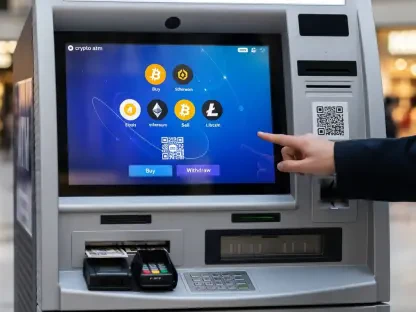India’s retail sector is undergoing a seismic shift. The rise of e-commerce and quick commerce platforms has reshaped consumer behavior and the competitive landscape. Traditional small shops and burgeoning retail giants now vie for consumer attention in a complex ecosystem marked by rapid evolution.
The Rise of E-commerce
Market Dominance by Amazon and Flipkart
Amazon India and Flipkart have emerged as game-changers in the Indian retail landscape. Their vast product selection, competitive pricing, and robust logistics have redefined convenience for the modern Indian consumer. With categories ranging from electronics to daily necessities, they have become household names synonymous with online shopping. The enormous success of these e-commerce pioneers has not only transformed how consumers shop but also set new standards for other online retailers to follow.
Despite their dominance, Amazon and Flipkart are not merely resting on their laurels. As of 2023, both companies continue to innovate by incorporating artificial intelligence for personalized recommendations and utilizing big data to streamline supply chain efficiencies. The popularity of these platforms is underscored by the fact that e-commerce accounted for approximately 7-8% of India’s total retail sales in 2023, with projections indicating substantial growth in the coming years. Their emphasis on making online transactions hassle-free has drawn a significant number of consumers away from traditional retail outlets.
Impact on Consumer Behavior
E-commerce has fundamentally altered shopping habits in India, transcending the limitations imposed by geographical locations and store hours. The convenience of ordering from home, coupled with extensive product variety and competitive pricing, has drawn consumers away from traditional retail. This shift is particularly evident in urban areas where internet penetration is high. With just a few clicks, consumers can have everything from groceries to high-end electronics delivered to their doorstep, often at a lower cost than local stores.
The impact of e-commerce is not merely confined to purchasing behavior. It has also influenced consumer expectations regarding service quality and delivery speed. Online reviews and ratings are now pivotal in the decision-making process. This digital feedback loop compels both online and offline retailers to elevate their customer service standards. Furthermore, the integration of digital payment options, loyalty programs, and mobile apps has made it easier for consumers to shop online, reinforcing the trend towards digital shopping.
The Emergence of Quick Commerce
Ultra-Fast Delivery Solutions
Platforms like BlinkIt, Instamart, and Zepto have tapped into the growing demand for instant gratification among urban consumers. These quick commerce platforms promise delivery times as short as 30 minutes for groceries and essentials, thereby setting a new benchmark in customer service. This model has become particularly popular in metro cities like Delhi, Mumbai, and Bengaluru, where the fast pace of life amplifies the need for convenience and time-saving solutions.
Unlike traditional e-commerce platforms that might take a day or two for delivery, quick commerce platforms utilize hyper-local delivery networks to fulfill orders in record time. This involves intricate coordination between local warehouses, delivery partners, and digital platforms to ensure that products reach consumers within the promised time frame. These platforms have optimized their logistics technology to accurately track inventory levels and predict demand spikes, making it possible to offer such unprecedented delivery speeds.
Market Projections and Growth
Quick commerce is projected to expand significantly, with studies indicating a 10-15 times growth by 2025, potentially reaching a $5.5 billion market. User adoption rates are soaring, as evidenced by BlinkIt’s daily delivery volumes of over 1.25 lakh orders in major cities. This rapid growth underscores the increasing consumer preference for speed and convenience. Innovations in this space are poised to reshape consumer expectations further, forcing traditional e-commerce platforms to innovate constantly to keep up.
The financial backing and investment in quick commerce also reflect its promising future. Venture capitalists and private equity firms have funneled significant resources into these platforms, anticipating substantial returns as the market matures. This influx of capital enables companies to expand their operational capabilities, explore new markets, and invest in advanced technologies to enhance delivery speeds and customer service. As quick commerce continues to grow, it will likely set new standards for what consumers expect regarding delivery timelines and overall shopping experience.
Large Retail Chains: Adapting and Expanding
Value Proposition of Large Retail Chains
Retail giants such as D’mart, Vishal Mega Mart, Reliance Digital, More, and Smart Bazar offer vast product assortments at competitive prices. Their business models focus on low margins and high volumes, appealing to a value-conscious Indian populace. D’mart, with over 300 stores nationwide, stands out by catering to both metros and smaller towns. This diverse footprint allows these retail chains to reach a broad spectrum of consumers, from urban professionals to rural families.
The value proposition of large retail chains extends beyond just pricing and product variety. Their extensive store networks allow for bulk purchasing and optimized supply chain management, leading to cost savings that can be passed on to consumers. These stores also invest in creating a pleasant shopping environment, with well-organized aisles, ample parking, and customer-friendly policies. This focus on enhancing the in-store experience ensures that they remain relevant even as online shopping gains traction.
Challenges and Strategic Responses
Despite their scale, large retail chains face the dual challenge of competing with both online platforms and quick commerce services. To stay relevant, these chains are enhancing their in-store experiences and integrating technology-driven solutions. Many are also expanding their own e-commerce capabilities to provide a seamless omnichannel experience to customers. For instance, several retail giants now offer a “click and collect” service, allowing consumers to order online and pick up their purchases at a nearby store.
Additionally, these chains are increasingly leveraging data analytics to understand consumer preferences better and to tailor their offerings accordingly. Loyalty programs, personalized promotions, and targeted advertising are some of the strategies employed to attract and retain customers. By adopting a hybrid model that combines the best of online and offline retail, these large chains aim to offer unparalleled convenience and value. This dual approach helps them maintain a competitive edge in an increasingly crowded market.
The Role of Direct-to-Consumer (D2C) Sales
Brand-Specific E-commerce Platforms
Brands like H&M, Nike, and Apple have launched their own e-commerce platforms, offering exclusive deals and fostering direct consumer engagement. This D2C approach allows brands to control the customer experience more tightly, from marketing to delivery. By circumventing traditional retail intermediaries, these companies can offer better prices, exclusive products, and personalized shopping experiences. The result is a more intimate relationship between the brand and the consumer, enhancing brand loyalty and customer satisfaction.
The D2C model also provides brands with valuable consumer data, enabling them to improve their products and services continually. Real-time feedback, purchase patterns, and customer interactions offer insights that can drive innovation and product development. This data-centric approach allows brands to respond swiftly to market trends and consumer demands, ensuring they remain relevant in a fast-changing retail landscape. Additionally, owning the customer relationship end-to-end allows brands to deliver consistent and high-quality service, further differentiating them from multi-brand retailers.
Impacts on Traditional and E-Commerce Retailers
The rise of D2C sales poses a unique challenge to both traditional retail and large e-commerce platforms. These brand-specific websites offer a curated shopping experience, often with better deals and loyalty programs, drawing consumers away from multi-brand platforms like Amazon and Flipkart. This shift is particularly noticeable in premium segments where consumers seek exclusive products and personalized services. The D2C model challenges the conventional retail paradigm by emphasizing direct engagement and bespoke consumer experiences.
Traditional retailers, including large chains, are compelled to rethink their strategies to compete with these D2C brands. Many are forming partnerships with popular brands to offer exclusive in-store experiences or co-branded products. Others are investing in their private label brands to differentiate themselves from competitors. For e-commerce giants, the competition is equally stiff, as they must continually innovate to provide unique value propositions that match or exceed those of D2C brands. This dynamic environment pushes all players to elevate their game, benefiting consumers through better products, prices, and services.
The Struggle and Adaptation of Small Kirana Shops
Decline in Foot Traffic and Sales
Small kirana stores have seen a significant drop in foot traffic and sales, largely due to the growing dominance of e-commerce and quick commerce platforms. According to a survey by the Confederation of All India Traders (CAIT), over 40% of small retailers have reported a substantial impact since these new competitors entered the market. The once-thriving community shops now find themselves grappling with reduced customer engagement and dwindling revenues. Yet, despite these challenges, the role of these small shops in India’s retail ecosystem remains crucial.
The decline in foot traffic can be attributed to several factors, including the convenience and offers provided by larger retail and e-commerce platforms. Urban consumers, in particular, are increasingly opting for the ease of online shopping, where they can compare prices, read reviews, and have products delivered to their doorstep. This shift has left small retailers in a precarious position, forcing them to reevaluate their business models and strategies to stay relevant in a changing marketplace.
Strategies for Survival and Adaptation
To survive amid this intense competition, small shops need to adapt by embracing technology and enhancing customer relationships. Offering locally sourced goods, engaging in community-driven activities, and leveraging digital tools can help retain their unique customer base. For example, many small retailers are now using mobile apps and social media platforms to reach customers, offering personalized services and home deliveries. This digital pivot helps them stay connected with their community while providing the convenience that modern consumers demand.
Union Minister Nitin Gadkari has emphasized the need for better regulations to ensure a level playing field for these small businesses. Government initiatives aimed at digitizing small retailers and providing them with access to better logistics and financial services can also play a crucial role. By modernizing operations and focusing on their strengths—such as personalized service and local expertise—small kirana shops can carve out a niche for themselves in the competitive retail landscape. Despite the formidable challenges, these shops have the potential to thrive by adapting to new market conditions and leveraging their unique advantages.
The Future of India’s Retail Landscape
Coexistence and Competition
The retail sector in India is moving towards a more diverse ecosystem where different formats coexist and compete. Large retail chains will continue their expansion, quick commerce will cater to the need for speed, and e-commerce will maintain its significant market share. Small kirana stores, despite the challenges, have the potential to thrive through innovation and adaptation. This multifaceted landscape offers consumers a variety of shopping experiences, each catering to different needs and preferences.
The future will likely see increased synergy between online and offline retail, with omnichannel strategies becoming more prominent. Consumers will have the flexibility to shop in-store, online, or via quick commerce platforms, based on their immediate needs and preferences. This seamless integration of various retail formats promises a richer, more personalized shopping experience, driving consumer satisfaction and loyalty. The onus will be on retailers of all sizes to continually innovate and adapt to stay competitive in this dynamic environment.
The Role of Policymakers
India’s retail sector is experiencing a dramatic transformation. This shift is primarily driven by the proliferation of e-commerce and quick commerce platforms, which have fundamentally changed consumer behaviors as well as the competitive landscape. These digital advancements allow consumers to shop from the comfort of their homes, offering unprecedented convenience and variety. Traditional small shops face increased pressure to adapt, while new retail giants rapidly expand their reach, making the market more dynamic than ever before.
Gone are the days when customers solely relied on their neighborhood stores for daily necessities. Today, everything from groceries to electronics can be delivered to one’s doorstep with a few clicks. This paradigm shift also means that businesses must continually innovate to stay relevant. For instance, many traditional stores are now establishing an online presence, embracing digital payments, and leveraging social media to engage with customers.
The competition is fierce, and only those who can adapt to the fast-paced changes will thrive. The rise of digital wallets and contactless payments further emphasizes the need for modernizing transactional methods. India’s retail ecosystem is now a blend of old and new, where technology plays a pivotal role in shaping future consumer habits and preferences.









